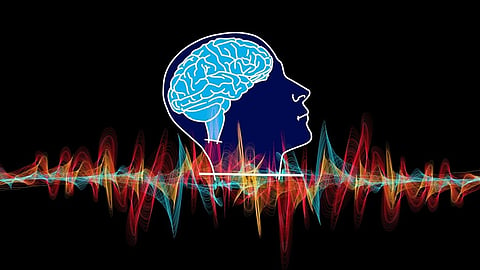

New Delhi | Researchers have found restoring certain signals, or gamma oscillations, in a brain region associated with processing smells to counter depression in a new study in mice and rats.
The study, led by researchers from New York University (NYU) Grossman School of Medicine, US, and Hungary's University of Szeged, said a certain brain rhythm of communication between brain regions, called gamma and repeating 30 times or more in a second, was an important timing pattern for the encoding of complex information, potentially including emotions.
While causes of depression remain unclear, these gamma oscillation changes act as markers of the disease in brain regions that manage the sense of smell, which have also been tied to emotions.
The study is published in the journal Neuron.
The researchers in this study first shut down the olfactory bulb, one of the brain regions managing smell and thought to be a source and conductor of gamma oscillations, in study rodents.
They observed a related spike in depression-like behaviours in the subjects, following which they reversed these behaviours by boosting gamma signals of the brain at their natural pace.
"This work demonstrates the power of gamma enhancement as a potential approach for countering depression and anxiety in cases where available medications are not effective," said corresponding study author Antal Berenyi, adjunct assistant professor in the Department of Neuroscience and Physiology at NYU Langone Health.
Disease-causing changes in the timing and strength of gamma signals, potentially caused by infections, trauma, or drugs, from the olfactory bulb to other brain regions of the limbic system, such as the piriform cortex and hippocampus, may alter emotions, even as the team is not sure why.
In one theory, depression arises not within the olfactory bulb but in changes to its outgoing gamma patterns to other brain targets.
Using several standard rodent tests of depression, including measures of anxiety that is one of its main symptoms, the team studied the behaviour of rodents to show the effect of the loss of gamma oscillation in the olfactory bulb.
The researchers measured anxiety by observing how long the animals spent in an open space and despair by observing if they stopped swimming earlier when submerged. Similarly, stopping drinking sugar water betrayed a sign of taking less pleasure in things, while refusing to enter a maze suggested avoidance of stressful situations.
Next, using a custom-made device which recorded the olfactory bulb's gamma oscillations, the researchers suppressed and then amplified the oscillations in the rodents' brain.
Suppression of gamma oscillations in the olfactory lobe induced behaviours resembling depression in humans. In addition, feeding an amplified olfactory bulb signal back into the brains of depressed rats restored normal gamma function in the limbic system, and reduced the depressive behaviours by 40 percent, almost back to normal.
"Moving forward, we will be working to better understand this link in the bulb, and in the regions it connects to, as behaviour changes," said senior study author Gyorgy Buzsaki, professor of Neuroscience in the Department of Neuroscience and Physiology.
